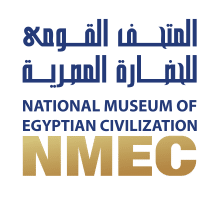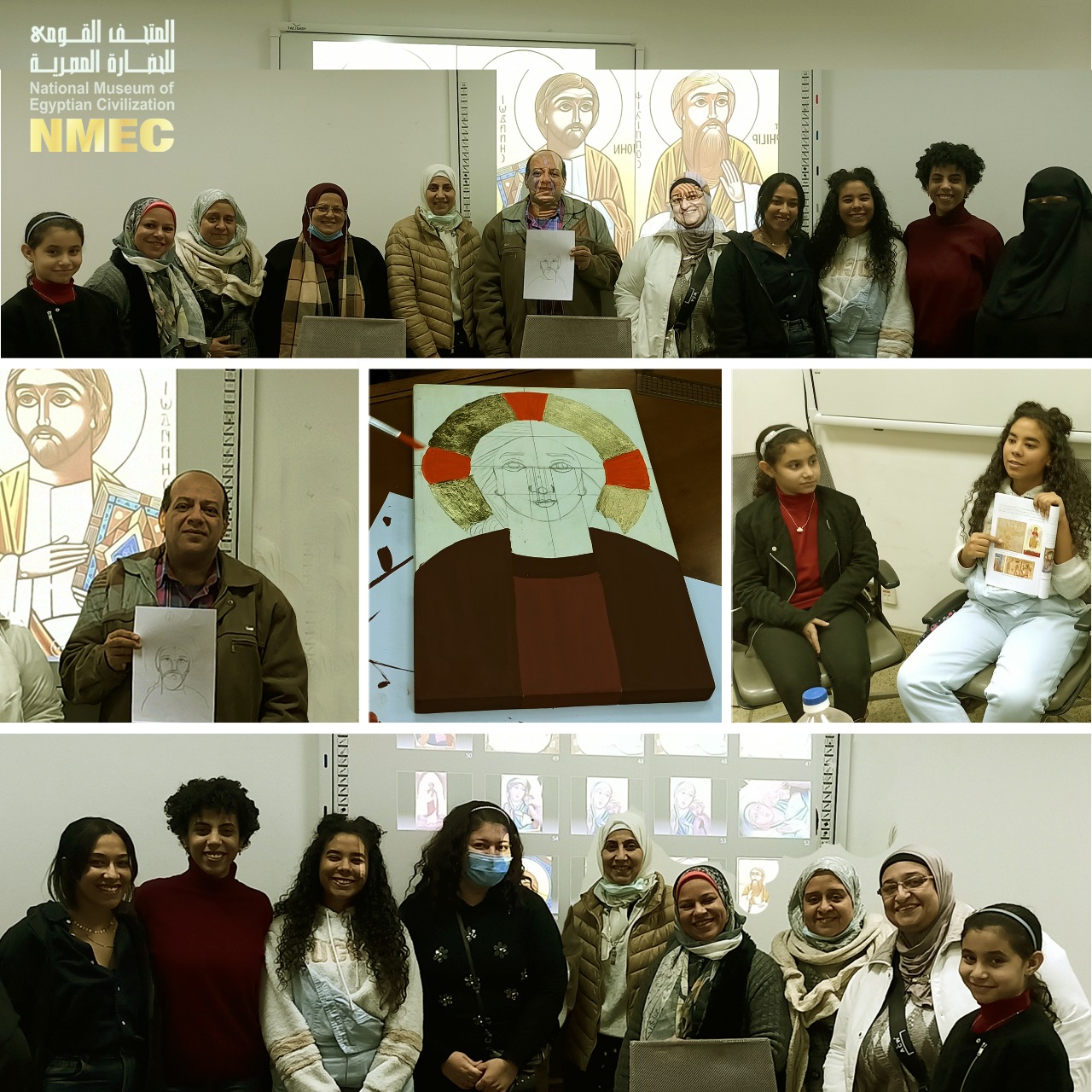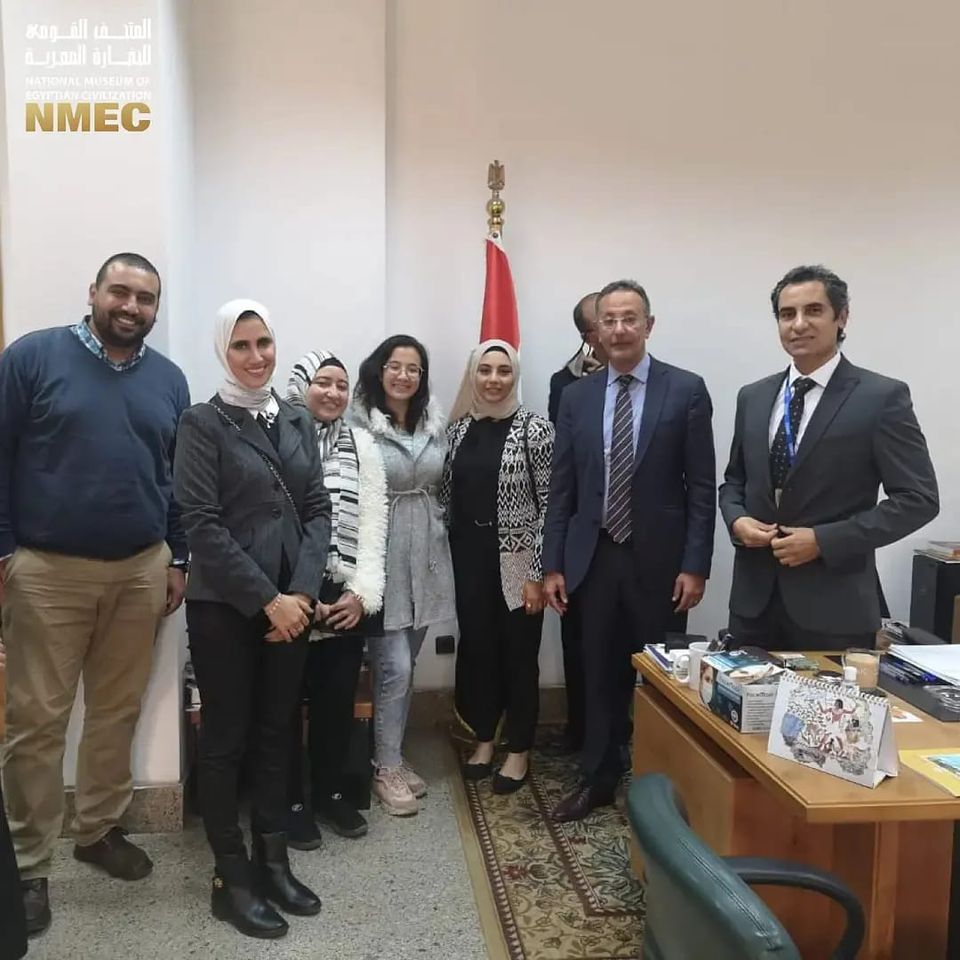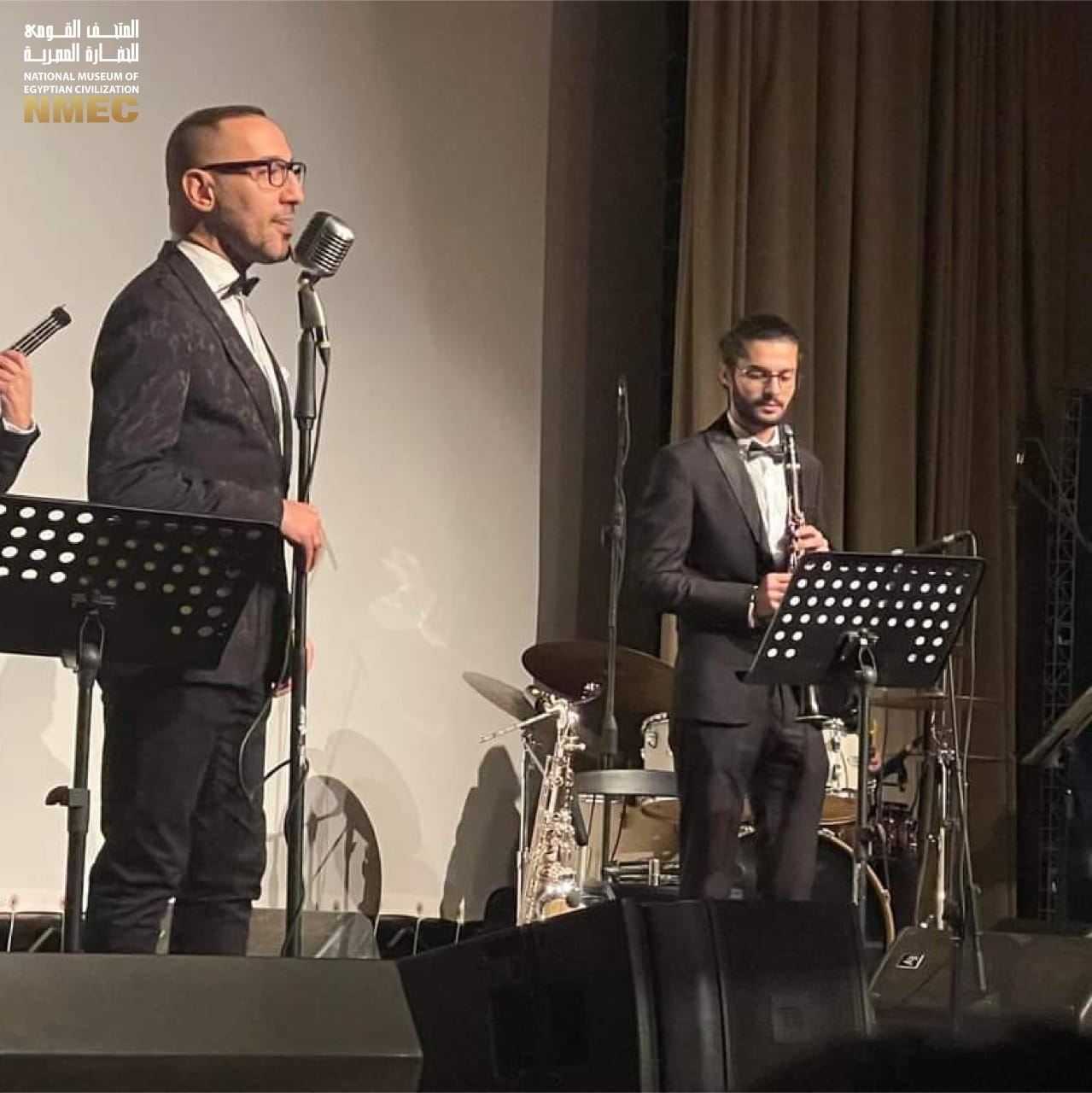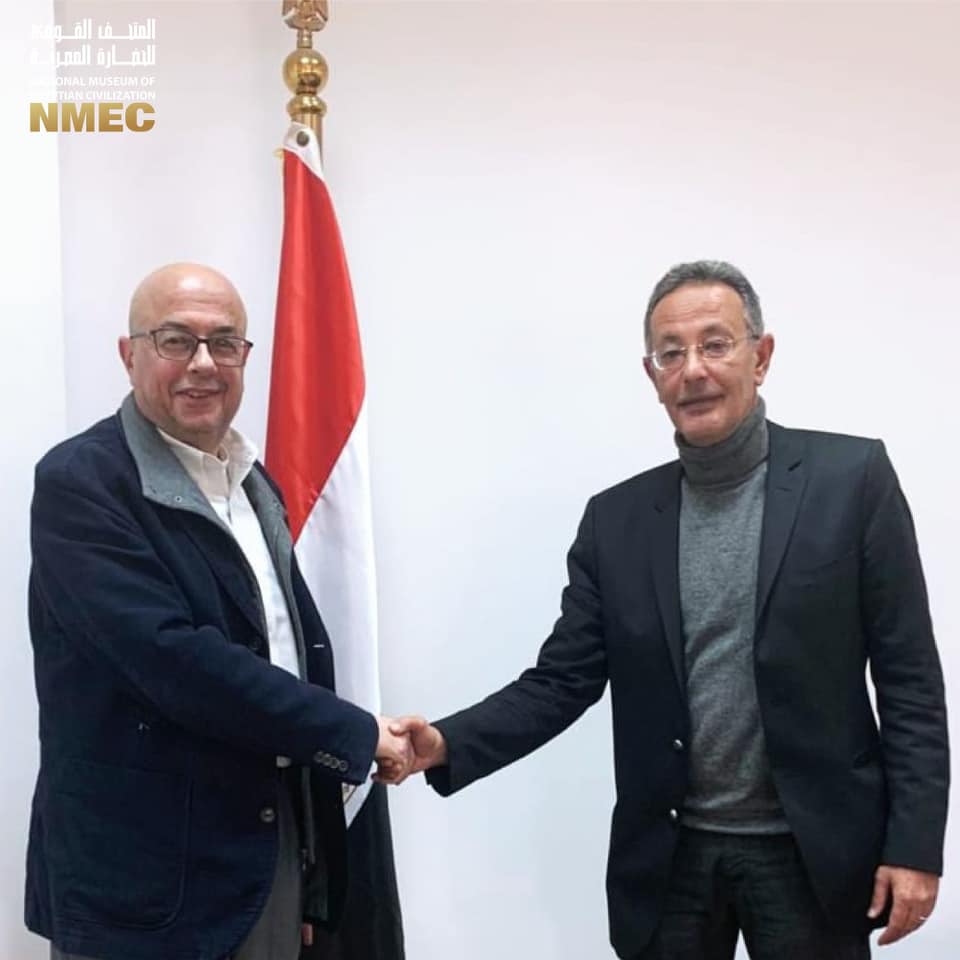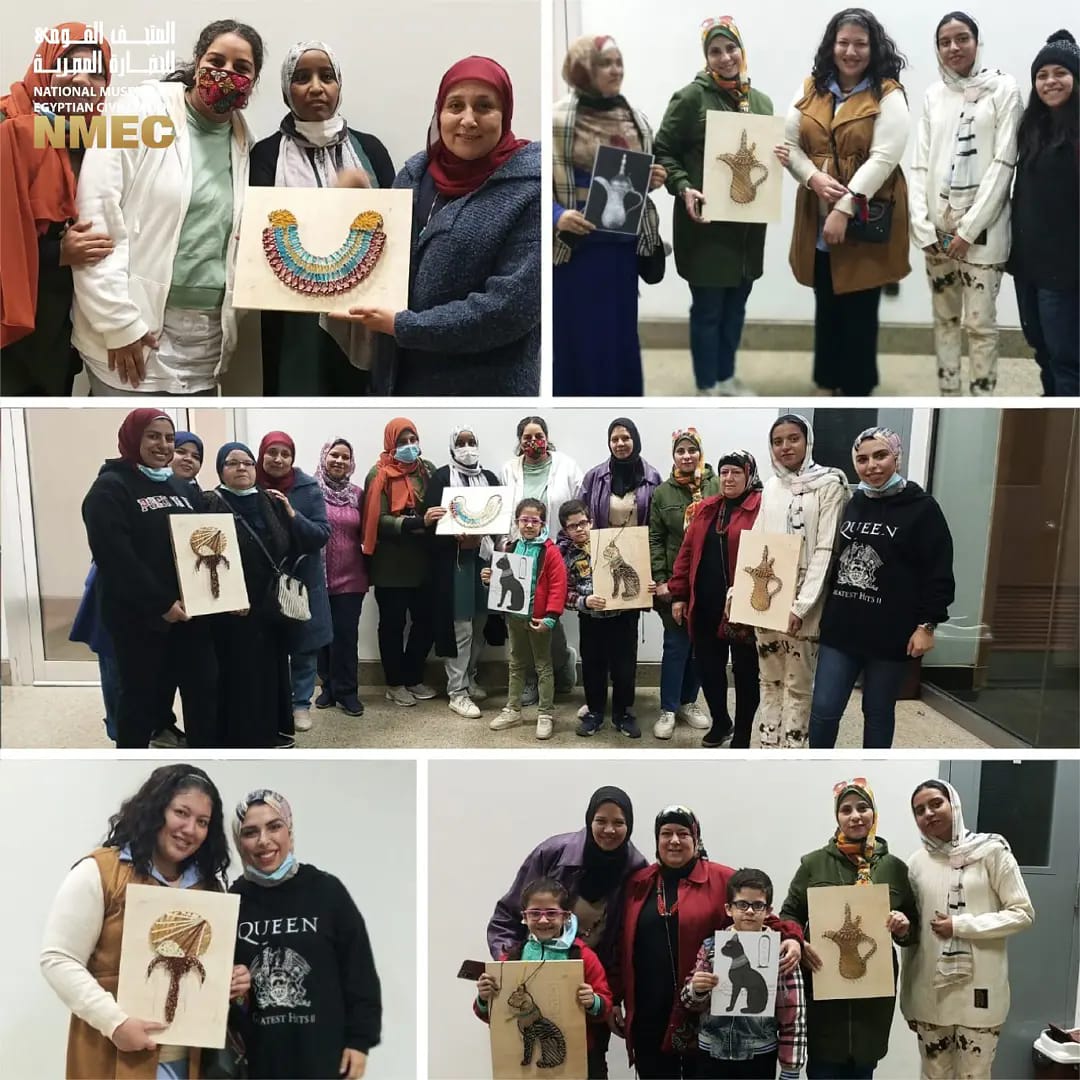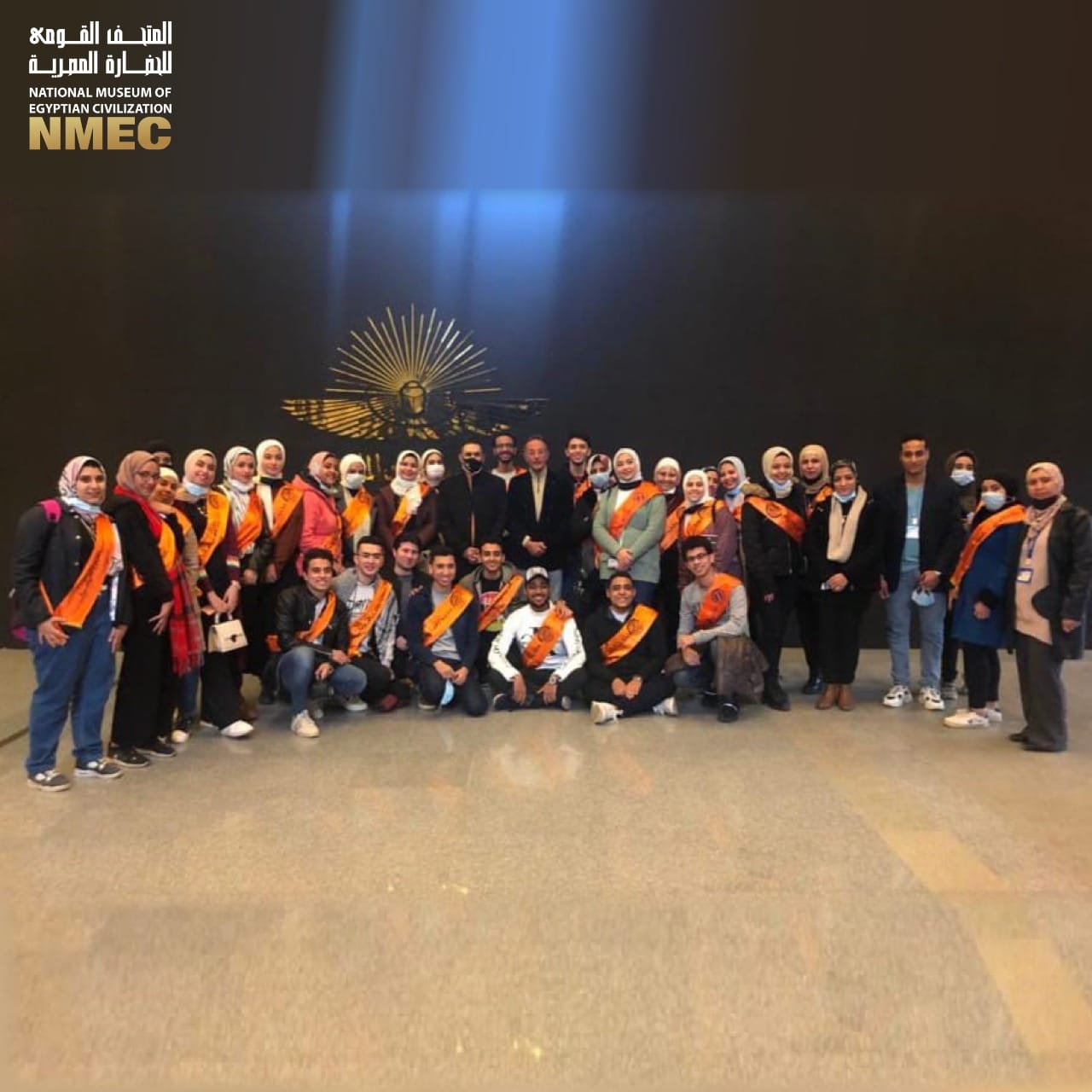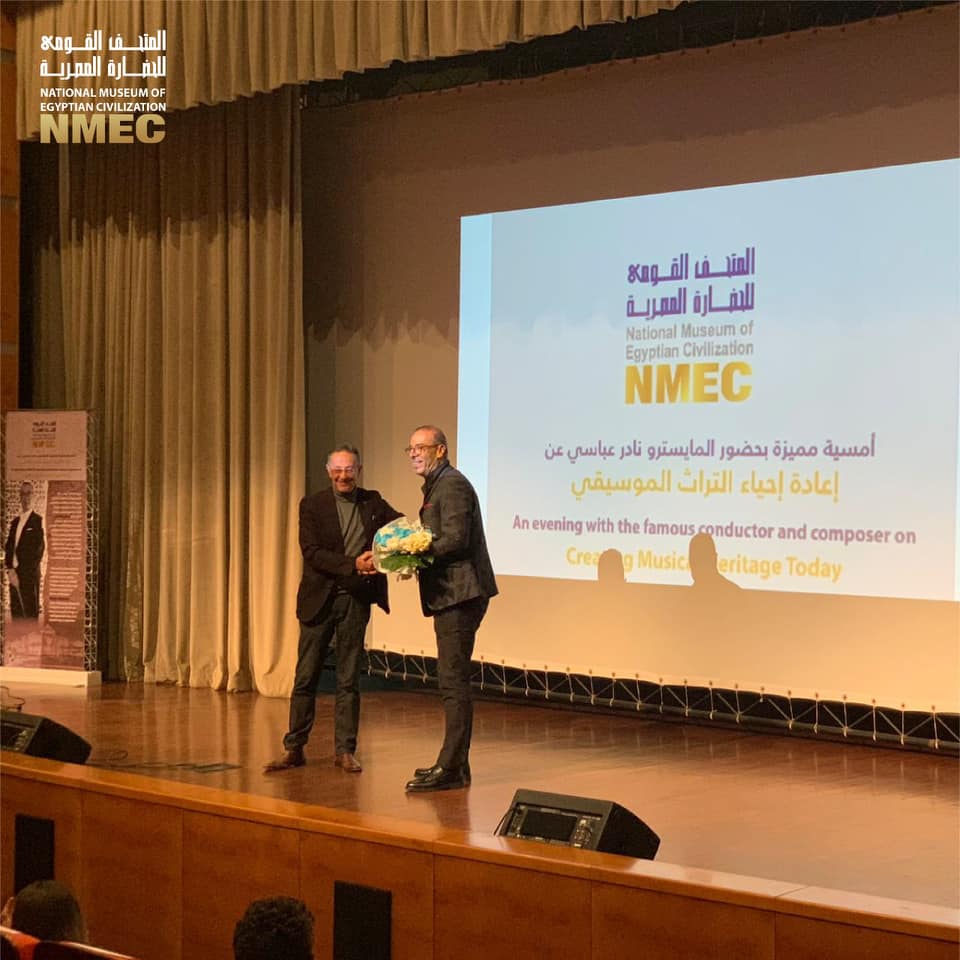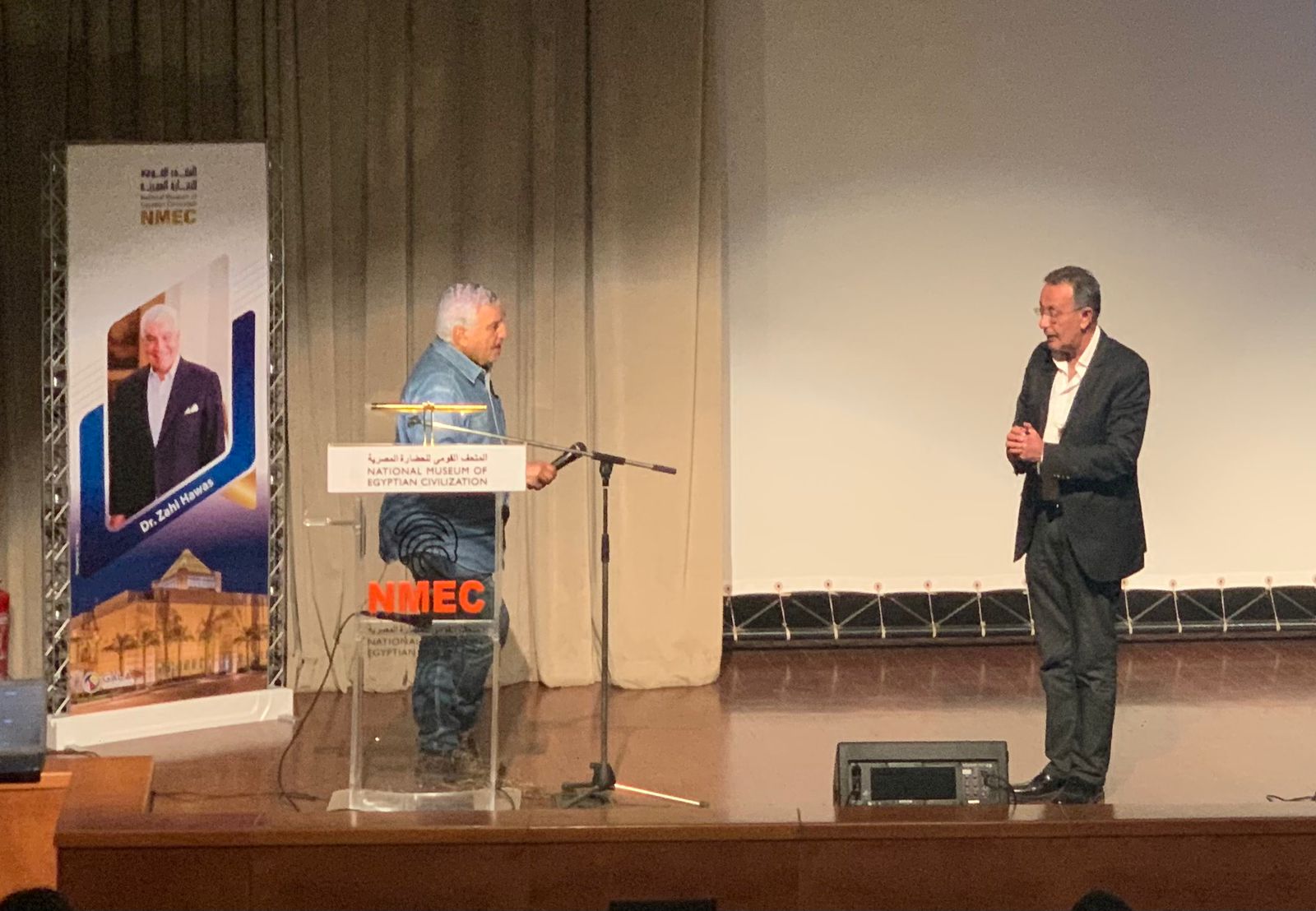The National Museum of Egyptian Civilization organized an interactive Art Talk and a Thematic Workshop on the ancient form of painting, famously known as; “Tempera Painting”, and its application in Coptic Art. Delivered by Joseph Baher, a graphic designer at the NMEC, the artistic dialogue begun by explaining the characteristics of Coptic art by analyzing a number of historical icons, then presenting modern models, and explaining the “tempera” coloring method. Then the event concluded by explaining the proportions of painting in Coptic art, and drawing a model for an icon. Narmin Mostafa, a Senior Art Specialist at the National Museum of Egyptian Civilization and the supervisor of these workshops, explained that there is an integrated art program that she has prepared to celebrate the establishment of the first art center within museums in Egypt, which aims to increase artistic awareness among the public, and activate the role of art and artists in linking the public with museums.
The World Art Forum (WAF)
The National Museum of Egyptian Civilization witnessed yesterday the inauguration ceremony of the first edition of the largest international contemporary art event “The World Art Forum (WAF)”, that reflects the link between contemporary art and the SDGs, which are in line with Egypt’s 2030 Vision.
“The World Art Forum (WAF)” will be running from 15 to 19 January and will be held under the auspices of the Ministry of Tourism and Antiquities, Ministry of Culture, the Ministry of Planning and Economic Development, the Ministry of Emigration and Expatriate Affairs, and the Ministry of Environment, along with the State’s Department of Tourism in Cairo, and in partnership with the United Nations’ Representative Office in Egypt, and the New York International Contemporary Art Society. The inauguration ceremony was attended by Dr. Hala El Said, The Minister of Planning and Economic Develoment, Dr. Ghada Waly, Executive Director of the United Nations Office on Drugs and Crime (UNODC), Ms. Elena Panova, UN Resident Coordinator in Egypt, Dr. Ahmed Ghoneim, Managing Executive Director of NMEC, Randa Fouad, Contemporary artist and President of Sheranda World Art and the WAF, in addition to a delegation of high-level members such as diplomats of foreign offices in Cairo, public figures and Egyptian and international artists.
And on behalf of Dr. Khaled al-Anani, the Minister of Tourism and Antiquities, Dr. Ahmed Ghoneim delivered a speech in which he expressed his delight for being elected to host such a prestigious event, in its first edition, which emphasizes NMEC’s role as an artistic, cultural and educational platform that celebrates the various forms of the Egyptian civilization’s rich heritage.
It is worth mentioning that more than 150 artists from 30 countries around the world are participating in the forum. The forum aims to consolidate the relationship of art in general and contemporary art in particular with the development of a culture that promotes a more sustainable future playing a role in enriching human beliefs and the dimensions of human identity and its role in constructing it. It addresses the linkages between contemporary arts and the United Nations Sustainable Development Goals, which is compatible with Egypt’s 2030 Vision.
NMEC organised under the mentorship of Dr. Ahmed Ghoneim, Managing Executive Director of NMEC, and in cooperation with the Information Technology Department and the Museum’s Educational Department, a training course titled “STEAM for Historical, Cultural and Mathematical Architecture Using GeoGebra”
The National Museum of Egyptian Civilization organised under the mentorship of Dr. Ahmed Ghoneim, Managing Executive Director of NMEC, and in cooperation with the Information Technology Department and the Museum’s Educational Department, a training course titled “STEAM for Historical, Cultural and Mathematical Architecture Using GeoGebra”. The course came within Dr. Ahmed Ghoneim’s vision to support innovative sectors of Information Technologies and automation of arts, architecture, history and cultural heritage.
The course targeted mathematical tutors from a number of schools, where they were acquainted with a full theoretical explanation of GeoGebra software, and the basic skills that teachers need to employ the software and use it to learn mathematics on their own, and help school students deepen their understanding of mathematical concepts, mathematical relations, inequalities, theories, functions and mappings.
The course introduced the tutors to the technology of Augmented Reality and the various possibilities of applying such technology within the museological field.
From a practical perspective, the course dealt with a two- and three-dimensional application of artifacts displayed in the Core Exhibition Hall of NMEC, using the Geogebra program, by drawing with points, rays, vectors, polygons, functions and mathematical relations, which resulted in the production of a small-sized stereoscopic pulpit of the Masjid and Madrasa of Abu Bakr Muzher, located at the Core Exhibition Hall of NMEC.
In conclusion, Dr. Ahmed Ghoneim handed out certificates of appreciation to the participants in the training course, where Dr. Ghoneim emphasized on the importance of hosting and organizing training courses and live workshops that enhance the process of enhancing the technological aspects in the historical and cultural sectors.
NMEC hosted a live performance for the London based Egyptian jazz vocalist and founder of the Egyptian Jazz Projekt; Ahmed Harfoush and his band
The National Museum of Egyptian Civilization in Fustat hosted a live performance for the London based Egyptian jazz vocalist and founder of the Egyptian Jazz Projekt; Ahmed Harfoush and his band, as part of NMEC’s cultural and artistic program.
Sponsored by Nestlé Egypt, the event was attended by a number of distinguished guests, senior public officials and ambassadors, including; the Under-Secretary-General of the United Nations, the Executive Director of the United Nations Office on Drugs and Crime (UNODC), the Director-General of the United Nations Office at Cairo, the Director of the Library of Alexandria, and the former Ministers Foreign Affairs, Communications and Information Technology, Planning and Economic Development, Higher Education and Scientific Research, as well as the presidents of Banque Misr, the CEO of the Commercial International Bank, and the Ambassadors of the Netherlands and Hungary.
Dr. Ahmed Ghoneim, Managing Executive Director of NMEC, expressed his sincere happiness with the concert’s great success and the audience’s positive interactions, which emphasizes NMEC’s position as a cultural and artistic venue of outstanding importance.
It is worth mentioning that NMEC’s cultural events are celebrated within strict implementation of all health and safety protocols to prevent the spread of COVID-19.
NMEC announces the release of a Mobile Application for the museum , in cooperation with IPMagiX
The National Museum of Egyptian Civilization announces the release of a Mobile Application for the museum , in cooperation with IPMagiX, that can be accessed by Google Play and App Store, as part of NMEC’s agenda to implement the latest technologies to enhance the museum experience.
Dr. Ahmed Ghoneim, Managing Executive Director of NMEC emphasized that the Mobile App aims at providing the ultimate guide to the Museum for visitors, as well as an in-depth information for those seeking more about the history of NMEC’s collections. In addition, the Mobile Application offers a general museum information; including the option to purchase tickets and hours of operation, as well as a list of the museum’s exhibits with photos and descriptions of important artifacts in its collection. It is worth mentioning that the Mobile application provides its users a self-guided tour at the museum building and its exhibition halls through the “Indoor Navigation” tool, that offers NMEC’s guests new ways to self-discover, and make the most out of their visit while onsite.
NMEC organized a live workshop on “String Art”, a widely-practiced and celebrated form of art.
The National Museum of Egyptian Civilization organized a live workshop on “String Art”, a widely-practiced and celebrated form of art. String Art is the art of arranging colored threads strung between points, pins or nails hammered into a covered wooden board to form beautifully colored geometrical shapes, in a very simple manner. The workshop was exceptionally admired by the attending audience, as they enjoyed imitating art works from NMEC’s collections and learned through the process, the very simple steps of beautifully creating art pieces using accessible materials such as nails and threads.
NMEC received a delegation from the Faculty of Economics and Political Science at Cairo University
the renowned Maestro Nader Abbassi, where he articulated his insights on “Reviving Musical Heritage”.
In an exceptional event, the National Museum of Egyptian Civilization hosted on its grand theatre the renowned Maestro Nader Abbassi, where he articulated his insights on “Reviving Musical Heritage”.
Dr. Ahmed Ghoneim, Managing Executive Director of NMEC, began the evening by welcoming the attendees and distinguished guests, highlighting the importance of conducting cultural and artistic events that reflect the status and value of Egypt’s civilization and inspire the public to visit the museum and get acquainted with the Egyptian civilization’s rich cultural heritage.
On the other hand, the Maestro discussed the vitality of musical heritage and methods of preserving and promoting our inherited traditions. He thoroughly addressed the recent growing demands of conducting and promoting the traditional forms of music, as they are considered important components of cultural heritage that represent expressions transferred through generations, and provide us with senses of continuity and identity.
The cultural seminar was attended by a large group of intelligentsia fond of various forms of tangible and intangible cultural heritage, among them was the distinguished Dr. Maysara Abdullah Hussein, Professor of Ancient Egyptian Archaeology and Religion, Faculty of Archaeology, Cairo University, who exchanged with Dr. Abbassi and the respectful audience the poems and chants that were chosen for the ceremony of the King’s Festivities Road – also known as the Avenue of Sphinxes – as well as the causes and circumstances of their choice. Also, among those who participated in the evening was artist Ahmed El-Mougy, who played a significant role with Nader Abbassi in executing that phenomenal performances at the ceremonies of the Royal Golden Parade and the Grand Reopening of the Sphinx Avenue.
For his part, Maestro Nader Abbassi expressed his sincere appreciation for the support and effective coordination received from NMEC’s management and its team of organizers who contribute in directing NMEC’s successful cultural events.
NMEC in Fustat organized an intellectual and artistic evening, as part of the cultural program organized by the museum, taking into consideration all precautionary measurements and safety protocols
The National Museum of Egyptian Civilization in Fustat organized an intellectual and artistic evening, as part of the cultural program organized by the museum, taking into consideration all precautionary measurements and safety protocols.
This evening came within NMEC’s vision and its role as a scientific, cultural hub. The event offered a lecture by archaeologist and former Minister of Antiquities, Dr. Zahi Hawass, on the most recent archaeological discoveries in Egypt, an art exhibition entitled “Eternal Egypt” by Egyptian artist Dr. Farid Fadel, in addition to a musical performance by viola player Suzan Saber. On one hand, Dr. Zahi Hawass delivered a lecture on the most recent archaeological discoveries in the Saqqara region and the lost golden city of Luxor, which dates back to 3000 years B.C, and was founded by King Amenhotep III, one of the great rulers of Egypt from the Eighteenth Dynasty. Hawas described it the largest administrative and industrial settlement in the era of the Egyptian Empire on the western bank of Luxor. The cultural evening on the other hand witnessed the opening of an art exhibition by the distinguished artist, Dr. Farid Fadel, entitled “Eternal Egypt”, which included a number of paintings that reflect his fondness for the ancient Egyptian civilization in its various eras, including three paintings inspired by collectibles displayed at NMEC’s Core Exhibition Hall. It is worth-mentioning that the exhibition is scheduled to last till January 2022.
And on the viola, artist Suzanne Saber dazzled the audience with her solo performance of three artistic pieces, including one by the Belgian artist Henri Viata from the nineteenth century.
NMEC welcomed two high-level delegations from Bahrain and the United Arab Emirates
The National Museum of Egyptian Civilization welcomed two high-level delegations from Bahrain and the United Arab Emirates. The two delegations included Mr. Zayed bin Rashid Al Zayani, Bahraini Minister of Industry, Commerce and Tourism and Chairman of the Board of Directors of the Bahrain Tourism and Exhibitions Authority and the accompanying delegation, and Sheikh Dr. Ammar bin Nasser Al Mualla, Cultural Attaché of the United Arab Emirates in Cairo and his accompanying delegation.
